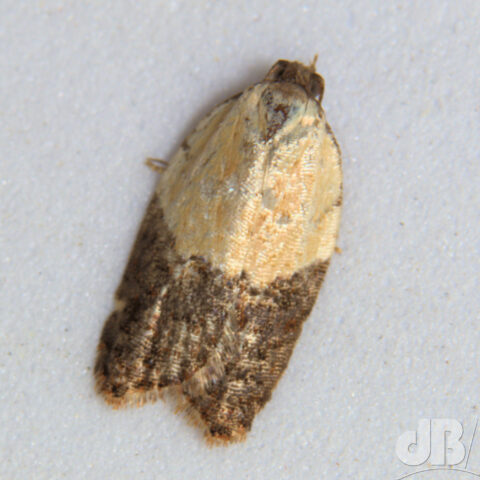Having written about one of the bigger moths we see in the UK, Connie, the migrant Convolvulus Hawk-moth, it only seems fair to give a mention to a micro, as opposed to macro moth. So, here’s the Garden Rose Tortrix.

Now, the macro versus micro label may well have been historically about size. The larger moths being macro, the smaller moths being micro, as you might imagine, but there are so many enormous micro moths and so many tiny macro moths in the world that this really doesn’t hold. In fact, the division is one of evolutionary history, the micro moths being a much older grouping.
The micro grouping includes all of the butterflies, which are essentially just a family of micro moths. The only physiological difference between what British English thinks of as butterflies and moths is that the butterflies cannot unhook their forewings from their hindwings. That’s it. Asking what’s the difference between a butterfly and a moth is like asking what’s the difference between a ladybird and a beetle, or a dog and a mammal…
Anyway, back to today’s micro. This tiny two-toned moth is known as a Garden Rose Tortrix, Acleris variegana. It is one of about 11000 worldwide moths that are members of the tortrix family, the Tortricidae. They’re so-called because their larvae roll themselves up in a leaf to pupate and metamorphose into the winged, adult. The word tortrix has the same etymology as the word torque, the word for a twisting force – torquere, meaning to twist.